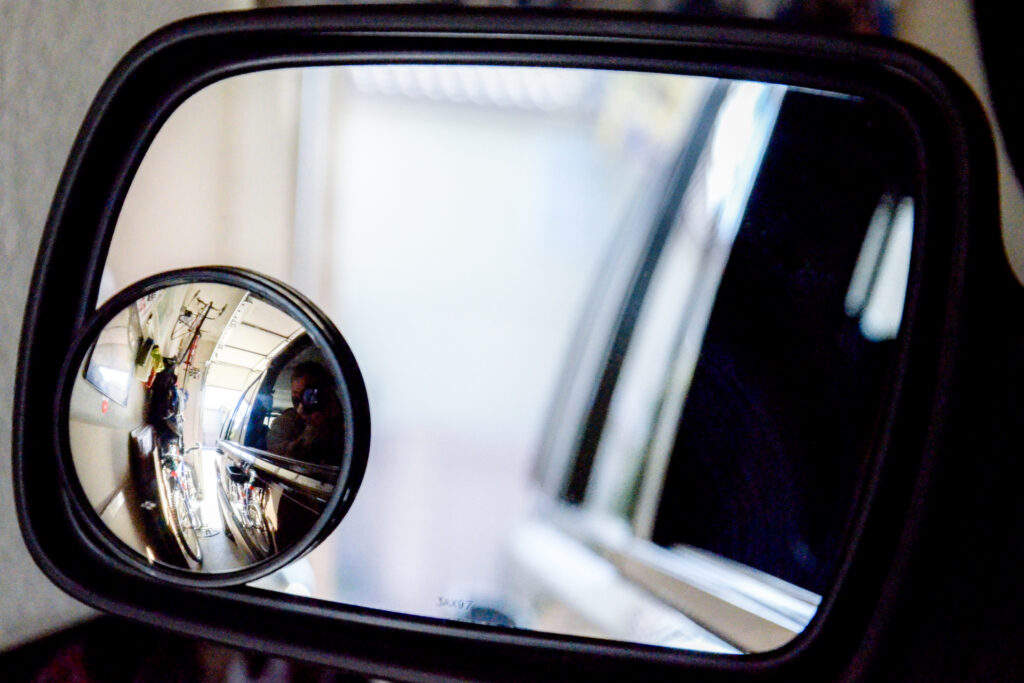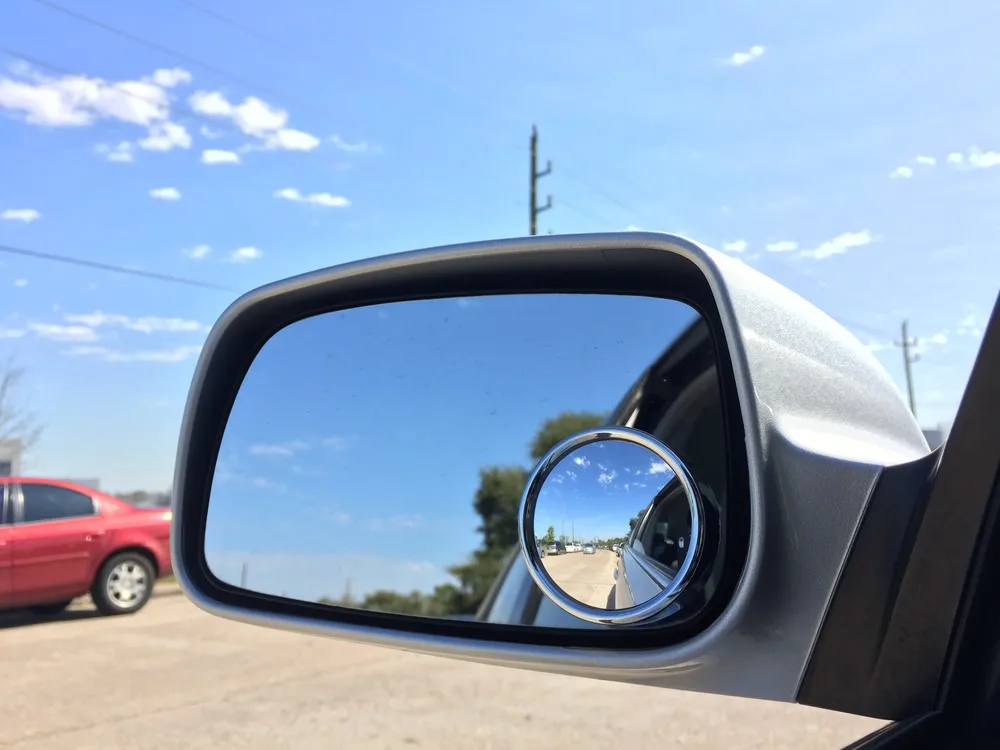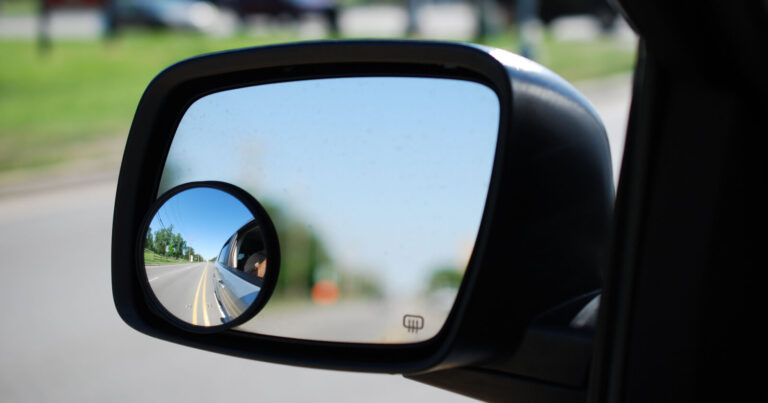Vehicle mirrors are often slightly curved and convex to enhance visibility and safety on the road. The convex shape offers a wider field of view compared to flat mirrors, reducing blind spots and providing a broader angle of vision. This design minimizes blind spots, enabling drivers to see approaching vehicles or cyclists that might be out of sight with flat mirrors. Additionally, convex mirrors assist in distance estimation, allowing drivers to better judge the relative distance and speed of vehicles behind or to the side.
In addition, they also reduce glare and distortion, making it easier for drivers to scan the mirror quickly without focusing on a specific point. However, the curvature of convex mirrors may slightly distort the perceived size and distance of objects, necessitating drivers to adjust their perception accordingly when using these mirrors.
How do Convex Vehicle Mirrors Enhance Visibility and Safety?

Convex vehicle mirrors, also known as convex mirrors or wide-angle mirrors, are designed with a curved shape that causes light to converge, providing a wider field of view compared to flat mirrors. These mirrors play a crucial role in enhancing visibility and safety for drivers in several ways.
Expanded Field of View
Convex mirrors offer a wider viewing angle, allowing drivers to see a larger area around their vehicle. This expanded view helps in detecting approaching vehicles, pedestrians, cyclists, or other objects in blind spots, which might not be visible in regular flat mirrors.
Elimination of Blind Spots
Convex mirrors are particularly effective in minimizing blind spots by providing a wider and more comprehensive view. This feature is especially beneficial for larger vehicles like trucks, buses, and vans, where blind spots can be significant.
Better Depth Perception
The curvature of convex mirrors helps in improving depth perception. While objects may appear smaller in convex mirrors compared to flat mirrors, drivers can gauge the relative distance and position of objects more accurately due to the wider field of view.
Improved Lane Changing and Parking
Convex mirrors aid drivers when changing lanes or maneuvering into tight spaces by offering a broader perspective. They allow drivers to see more of the adjacent lanes and parking areas, making these maneuvers safer and more manageable.
Enhanced Safety
By reducing blind spots and providing a broader view, convex mirrors contribute significantly to overall road safety. They assist drivers in making informed decisions, preventing accidents caused by sudden lane changes or unexpected obstacles.
However, it’s essential to note that convex mirrors can also have some limitations. Due to their curved shape, they might distort the perception of distance and object size. Objects viewed in convex mirrors may appear smaller and farther away than they actually are, which could potentially affect the driver’s judgment in certain situations.
Therefore, while convex mirrors greatly enhance visibility and safety by expanding the field of view and reducing blind spots, drivers should use them in conjunction with regular flat mirrors and practice caution and awareness when relying on them. Regular checks of all mirrors and physical turning to check blind spots remain critical for safe driving practices.
What Functionality Defines Convex Mirrors in Vehicles?
Convex mirrors used in vehicles are characterized by their unique curvature, which differentiates them from flat or plane mirrors. The key functionality that defines convex mirrors in vehicles is their ability to provide a wider field of view compared to flat mirrors. The curvature of convex mirrors causes light rays to diverge or spread out, allowing them to cover a larger area, which enhances visibility in several ways.
Wide Viewing Angle
Convex mirrors offer a broader viewing angle, enabling drivers to see a larger area around their vehicle. This expanded field of view is particularly beneficial for monitoring blind spots, detecting approaching vehicles, pedestrians, cyclists, or obstacles that might not be visible in regular flat mirrors.
Minimized Blind Spots
Convex mirrors are effective in reducing blind spots. Their curvature helps to capture a wider perspective, which aids in minimizing the areas not covered by the driver’s direct line of sight. This feature is especially valuable for larger vehicles with more extensive blind spots.
Enhanced Depth Perception

Although objects in convex mirrors may appear smaller due to the curvature, the wider view assists drivers in assessing the relative distance and position of objects. This improved depth perception aids in making better-informed decisions while driving or maneuvering in traffic.
Improved Safety
By providing a wider field of view and reducing blind spots, convex mirrors contribute significantly to overall road safety. They assist drivers in making safer lane changes, parking maneuvers, and navigating through traffic by offering a more comprehensive perspective of their surroundings.
The curvature of convex mirrors comes with some trade-offs. Objects viewed in convex mirrors may appear smaller and farther away than they are in reality. This distortion of size and distance could potentially affect the driver’s judgment, emphasizing the importance of using convex mirrors in conjunction with regular flat mirrors and exercising caution and awareness while driving.
FAQ’s
What is the best fertilizer for rhododendrons?
Acidic fertilizer designed for azaleas and rhododendrons with a balanced N-P-K ratio, such as 10-6-4 or 12-6-6.
What deficiency causes yellowing of leaves?
Nitrogen or iron deficiency often causes chlorosis, resulting in yellowing leaves.
Can a yellow leaf turn green again?
Generally, once a leaf turns yellow, it won’t revert to green; focus on new growth.
What fertilizer for yellow leaves?
A fertilizer with a higher nitrogen content can help address yellowing leaves.
Are yellow leaves overwatering or underwatering?
Yellowing leaves can be a sign of both overwatering (wilting) and underwatering (dry, crispy leaves).
What is a natural fertilizer for rhododendrons?
Organic options like composted pine needles, coffee grounds, or well-rotted manure can serve as natural fertilizers.
Final Words
Convex vehicle mirrors are designed to make driving safer by providing a wider view of the road. They help reduce blind spots and allow drivers to see more, improving overall visibility. While these mirrors may slightly distort the image, they play a crucial role in enhancing safety by enabling drivers to better judge distances and minimize glare.
In simple terms, convex mirrors are intentionally shaped to help drivers see more while navigating the roads, contributing significantly to safer driving experiences for everyone.

